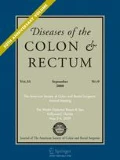Abstract
Walter Cannon was born October 19, 1871, in Prairie du Chien, Wisconsin, the year that Oliver Wendell Holmes retired as Professor of Anatomy and Physiology at Harvard Medical School. Cannon attended public school in Milwaukee and in St. Paul, Minnesota. Because of his scholastic ability, he was granted a scholarship to Harvard, graduatingSumma Cum Laude in 1896. He entered Harvard Medical School, where he received his Master of Arts degree the following year, and his Doctorate in Medicine in 1900.
As a first year medical student, Cannon was encouraged by Professor Henry P. Bowditch to utilize the newly discovered roentgen ray in order to study the process of digestion in animals. His initial observations followed administration of mush mixed with bismuth to a goose.
Following these studies, he focused his attention on gastrointestinal motility, tracing on toilet paper the fluoroscopic appearance of the gut—red for the stomach, green for the small bowel, and brown for the large bowel. Cannon's ring was described as the tonic contraction often seen radiologically in the right transverse colon. Other observations included the suspension of gastric motility when the experimental animal was distressed.
In 1906 he was appointed Professor of Physiology at Harvard, a position he held until achieving emeritus status in 1942.
In 1917, he left for France with the Harvard Hospital Unit to study shock in the wounded. This culminated in 1923 with the book,Traumatic Shock, which summarized his years at the front.
In addition to the publication of several books and numerous articles, Cannon achieved worldwide recognition for other contributions in physiology. He discovered Sympathin E (the excitor factor), and Sympathin I (the inhibitor), terms which have since been replaced by epinephrine and norepinephrine. He described the chemical mediation of nerve impulses and coined the word, “homeostasis.”
An adventurous spirit, he was the first to climb Goat Mountain in Glacier National Park. It has since been renamed and is now officially called Cannon Mountain.
Truly a world citizen, he became National Chairman of the Medical Bureau to Aid the Spanish Democracy in the 1930s, Foreign Secretary of the National Academy of Sciences, and President of the American-Soviet Medical Society.
Early in his experiments, he developed skin sloughing due to radiation exposure. He established the principle of lead lining of the fluoroscopy tube to limit scattered radiation, but despite these precautions, he required multiple skin grafts of his hands over the years, and succumbed eventually to lymphoma complicated by mycosis fungoides. His wife, the former Cornelia James, a well-known author in her own right, wrote after his death, “He proved to be a martyr to the work with the x-rays.”
Walter Cannon died October 1, 1945, at the age of 74.
Biography
Drinker CK. Walter Bradford Cannon. Science 1945;102:470–2.
Garland J. Walter Bradford Cannon. Harvard Med Alumnae Bull 1971;46:4–8.
Spillman R. Walter Bradford Cannon, AJR 1946;55:94–6.
Cannon B. Walter Bradford Cannon, M.D. Gastrointest Radiol 1982;7:1–6.
Bibliography
Cannon WB. The movements of the intestines studied by means of the Röntgen Rays. Am J Physiol 1901/1902;6:251–77.
Drinker CK. Walter Bradford Cannon. Science 1945;102:470–2.
Garland J. Walter Bradford Cannon. Harvard Med Alumnae Bull 1971;46:4–8.
Spillman R. Walter Bradford Cannon. AJR 1946;55:94–6.
Cannon B. Walter Bradford Cannon. M. D. Gastrointest Radiol 1982;7:1–6.
Additional information
From the Laboratory of Physiology in the Harvard Medical School.
The results of this investigation were reported to the Boston Society of Medical Sciences, November 19, 1901.
About this article
Cite this article
Corman, M.L. Walter Bradford Cannon 1871–1945. Dis Colon Rectum 26, 634–647 (1983). https://doi.org/10.1007/BF02552984
Issue Date:
DOI: https://doi.org/10.1007/BF02552984

